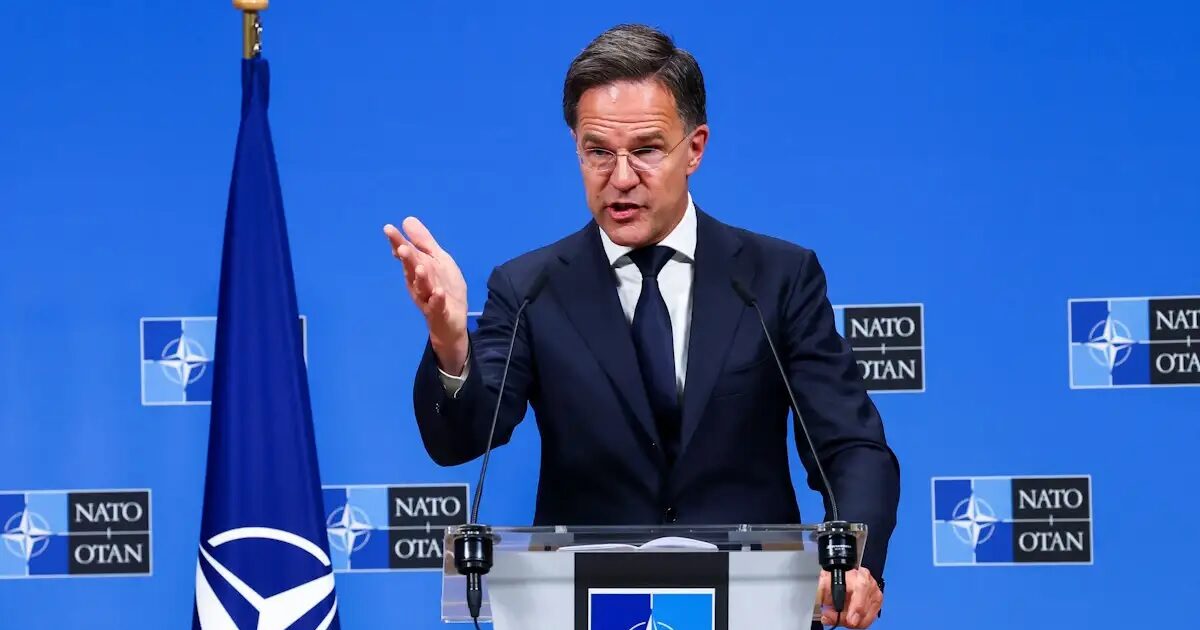Agreed yesterday (22.6.25) to a 5% target for defense The countries – members of NATO (in view of the meetingaccording to DPA and Reuters news agencies, which cited confidential information.
At least 3.5% of GDP for defense must be available from NATO member countries for traditional military spending. It will also be possible, for example, to include spending on the fight against terrorism and infrastructure that can be used for military purposes. This could include, for example, railway investments, armored bridges and expanded ports.
The deadline for achieving the new goal of defense spending is in 2035, according to the text of the scheduled final statement of the NATO Summit, the German News Agency (DPA) reports. Therefore, the written decision -making process has been finalized.
Spain: Compromise in two letters
Spanish Prime Minister Pedro Sanchez announced last Thursday, June 19, 2025 that his country does not want to join the 5% target and instead asked for one ‘More flexible formula’.
The Spanish government had argued that it had to spend only 2.1% of its economic production in order to achieve the objectives of NATO’s capabilities agreed in June.
On Sunday, June 22, NATO Secretary General Mark Rutte and Sancheth then agreed to a compromise in two letters, which are available to Handelsblatt: The Spanish government is now saying that “allies” will achieve the goal and not that all allies will achieve the goal of spending 5% of their economic production on defense.
The plan is Maintain its 5%goal, but to be interpreted with flexibility as long as Madrid meets the goals of NATO’s potential. In early June, NATO defense ministers decided to re -equipment that sets the new goals for the alliance’s deterrent and defense capabilities.
“In the light of your letter, I can confirm with the presentation that the agreement at the forthcoming NATO summit provides Spain the flexibility to determine its own sovereign path to achieving the goal of capacity and the required annual resources in relation to GDP and its annual resources.” It refers to the letter that Rutte sent to Sanchez on Sunday.
Sánchez responded that Spain accepts a statement plan at the forthcoming NATO summit “with the understanding that Spain’s commitment refers to timely and complete achievement of the goal of the potential, regardless of the percentage of GDP, and that we present Our annual plans accordingly. “
In the evening, Sánchez also spoke on Spanish television and explained that Spain It was not committed to increasing its defense spending to 5% of gross domestic product. “Such a level of expenditure would be incompatible with our welfare state and worldview”he said in his television speech.
Spain has managed to change NATO consensus, Handelsblatt comments. The desire of the majority of the Member States of the Alliance to commit to defense spending of 5% of GDP has now been compatible with the right of other nations to be obliged to do so, Sánchez said.
The head of government, leading a minority government with an alternative left -wing coalition partner, estimated that an increase of two to five percent would mean additional costs of 350 billion euros by 2035. Illness and maternity and the drastic cut of investment in education.
As sovereign countries, all NATO members have the right and duty to decide for themselves whether they want to make such sacrifices or not. “And we, as a dominant country, decided not to do it”said Sánchez.
However, the question is what the US position will be on the agreement. “NATO should deal with Spain”US President Trump told reporters on Friday, 2025. “Spain is a very bad payer. I think Spain will have to pay what everyone else has to pay. “
NATO target: Trump leads the discussion
NATO’s objective for defense spending provides at least at present only annual national expenditure at least 2% of GDP. The reason for the increase now agreed is mainly the threats posed by Russia, but also the demand of US President Donald Trump for Europeans to take the main responsibility for conventional deterrence and defense on their continent.
At the NATO Foreign Ministers in Turkey in May, Germany had already supported US President Trump’s request for massive increase in allied defense spending to 5% of gross domestic product.
For many NATO states, the new target is a huge challenge – even if it should not be achieved before 2035. Last year, Germany only achieved a percentage of 2.1% and, according to Chancellor Friedrich Mertz (CDU), each percentage of more than 45 euros more.
5%, according to Merz’s calculations, would currently be Necessary defense costs of 225 billion euros annually. To understand the amount of these costs, it is sufficient to see that the total costs of the federal budget amounted to about 466 billion euros last year.
Defense Expenditure: Poland precedes
The new goal is likely to be comparatively uninterrupted only for the US itself and for countries such as Estonia, Latvia and Greece. They already have traditional defense spending of over 3%. Poland was a pioneer last year with 4.1% of GDP. According to alliance data, the US has more recently a GDP ratio of about 3.4%.
The text on the final declaration of the NATO Summit is likely to be frustrating for Ukraine. According to the text now agreed, Ukraine only promises indefinitely the continuation of support.
At last year’s summit in Washington, NATO assured Ukraine that it would provide security support totaling 40 billion euros. It was also stated that her course to integration was irreversible. Due to the resistance mainly to the US, such formalities could no longer be repeated.
